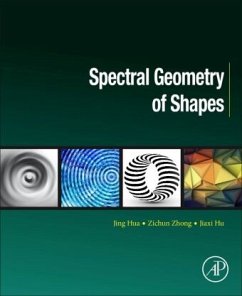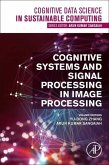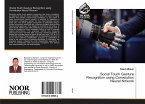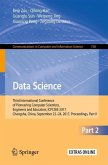Spectral Geometry of Shapes presents unique shape analysis approaches based on shape spectrum in differential geometry. It provides insights on how to develop geometry-based methods for 3D shape analysis. The book is an ideal learning resource for graduate students and researchers in computer science, computer engineering and applied mathematics who have an interest in 3D shape analysis, shape motion analysis, image analysis, medical image analysis, computer vision and computer graphics. Due to the rapid advancement of 3D acquisition technologies there has been a big increase in 3D shape data that requires a variety of shape analysis methods, hence the need for this comprehensive resource.
"Beltrami spectral domain. An important property of the thus defined features is invariance or at least stability with respect to global isometries, scaling, isometric deformations, and changes in the triangulation. The next chapter is dedicated to the analysis of near-isometric poses of unregistered triangular meshes. The approach via spectral geometry allows the labelling of different semantic parts. An important application is skeleton extraction and animation of triangular meshes. Again, the algorithms are stable with respect to Euclidean transformations and triangulation. The chapter on nonisometric motion analysis is based on a chapter in the second author's PhD thesis. The main theoretical result states that the shape spectrum (a family of eigenfunctions) is analytic and provides analytic expressions for its derivatives. These can be used for the analysis of nonisometrically deforming triangular meshes, and the authors present important applications in medicine. Registration of nonisometric surfaces can be accomplished by simultaneously matching eigenvectors and eigenvalues of the Laplace-Beltrami spectrum by optimizing a suitable energy functional [H. Hamidian et al., "Surface registration with eigenvalues and eigenvectors?, IEEE Trans. Vis. Comput. Gr., 1-1 (2019; doi:10.1109/tvcg.2019.2915567)]. This approach also allows to determine the point-to-point correspondence and compares favourably with other registration methods. The book concludes with a chapter on deep learning of spectral geometry. After a brief overview on the basics of deep learning, it discusses existing approaches based on multiple view, volumetric, point cloud or mesh representations of the geometry and, finally, adds ideas for deep learning in spectral domains." --ZBMath








